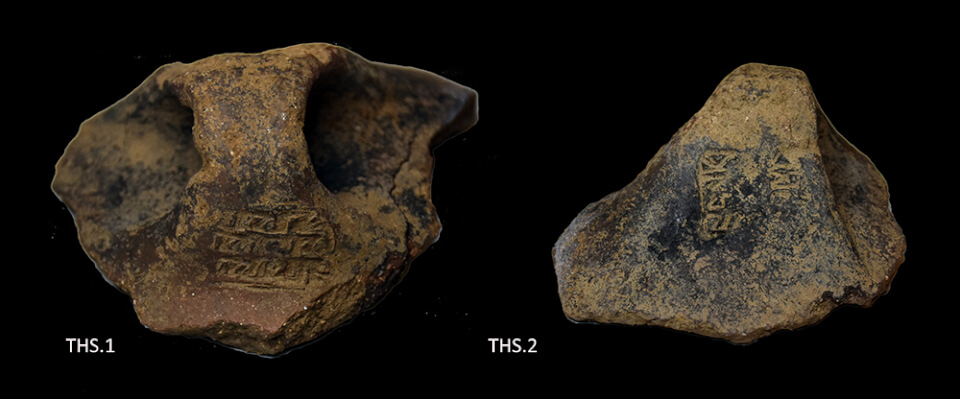The Ionian University excavation at the prehistoric settlement of Koimisi in Therasia has brought to light an important find, which sheds light on the first steps in the creation of writing in the prehistoric Aegean. The find was published in open access by Cambridge University Press, in an article by K. Sbonia, I. Tzachilis and G. Kordatzakis: https://doi.org/10.1017/S0068245425000024
These are two seal impressions on a vase handle, which come from a room of the settlement dating to the mid-3rd millennium BC (Early Cycladic II period). The first seal ( THS.1 ), on the upper part of the handle, comes from a three-sided seal with elongated surfaces, decorated with a series of abstract and schematic symbols in a parabolic arrangement. These successive signs, placed in a coherent sequence, constitute the earliest evidence for developments associated with the appearance of writing in the Aegean area. The second seal ( THS.2 ), with linear and meandering decorative themes, is part of the general tradition of Aegean seal engraving.
The first organized writing systems appear in Minoan Crete in the early 2nd millennium BC (Cretan Hieroglyphic and Linear A). The THS.1 seal from Koimisi may represent an early stage in the development of a more complex communication system, based on the socioeconomic and cultural practices of the Aegean during the Early Bronze Age. Seals on ceramics made before the vessels were fired could indicate the maker, origin, or content of the vessel. The symbols on the Therasia seal may depict names or broader conceptual patterns at an early stage in the development of writing.
Based on the results of the petrographic analysis of the ceramic fragment by the postdoctoral fellow of the Department of History of the Ionian University, G. Kordatzakis, Naxos, which maintained strong connections with Santorini, is considered the most likely source of both the raw materials used for the construction of the vessel and, possibly, the origin of the vessel itself and the seals on its handle.
The significance of the impressions must be interpreted in the broader network of maritime exchanges of the Aegean, through which vessels and goods were traded. The seal of Therasia reinforces the idea that the creation of complex communication systems was already underway in the Aegean, in connection with the declaration of identity, the control of goods and the increasing social complexity, characteristics of the 'proto-urban societies' of the Early Bronze Age. The symbols of the seals from the settlement of Koimisi in Therasia represent a previously unknown step on the path towards the creation of writing in the prehistoric Aegean.
The excavation is being carried out by the Ionian University in collaboration with the University of Crete and the Ephorate of Antiquities of the Cyclades, under the direction of Professor K. Sbonia, Professor Emeritus I. Tzachilis and M. Efstathiou.
Link:




